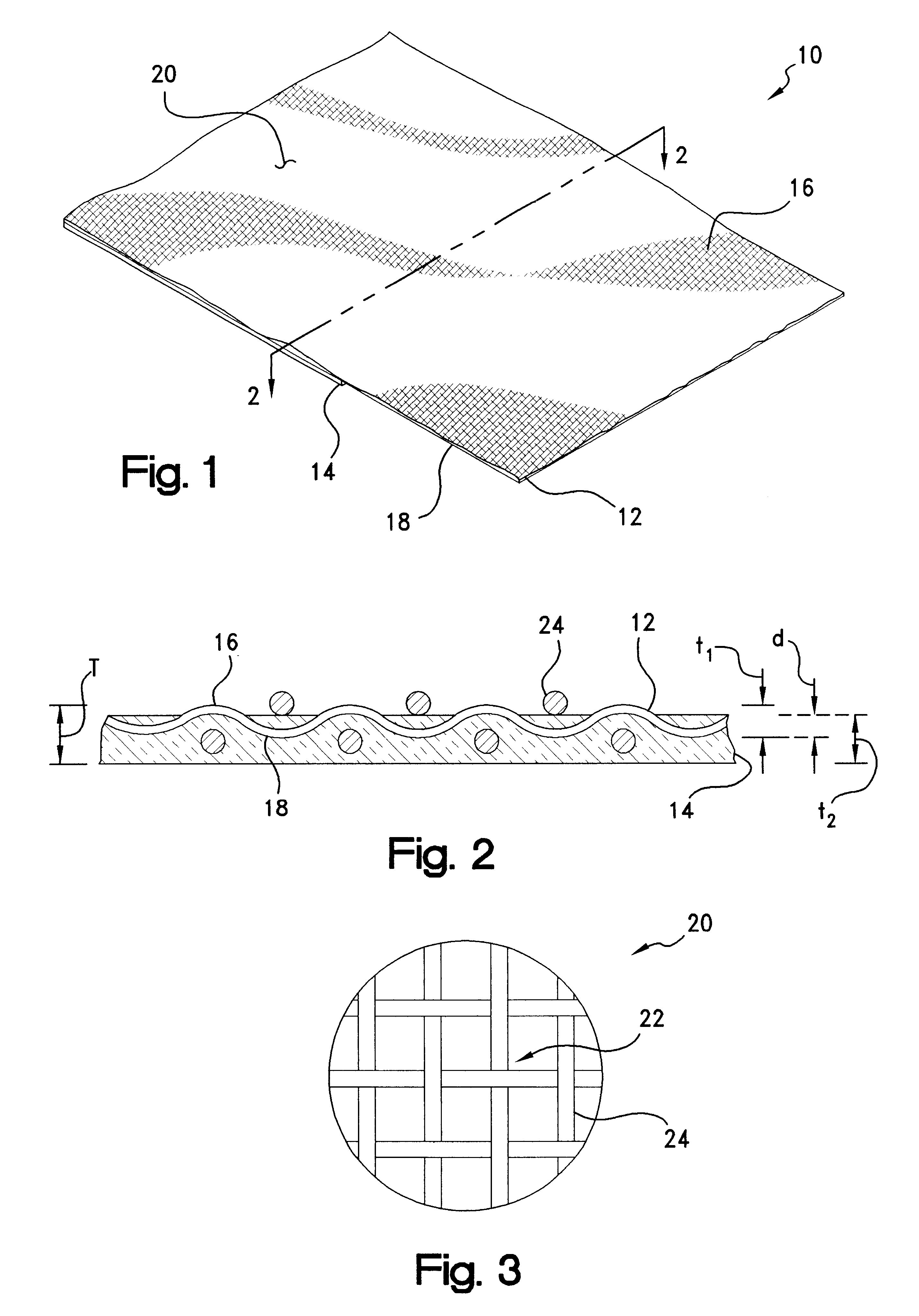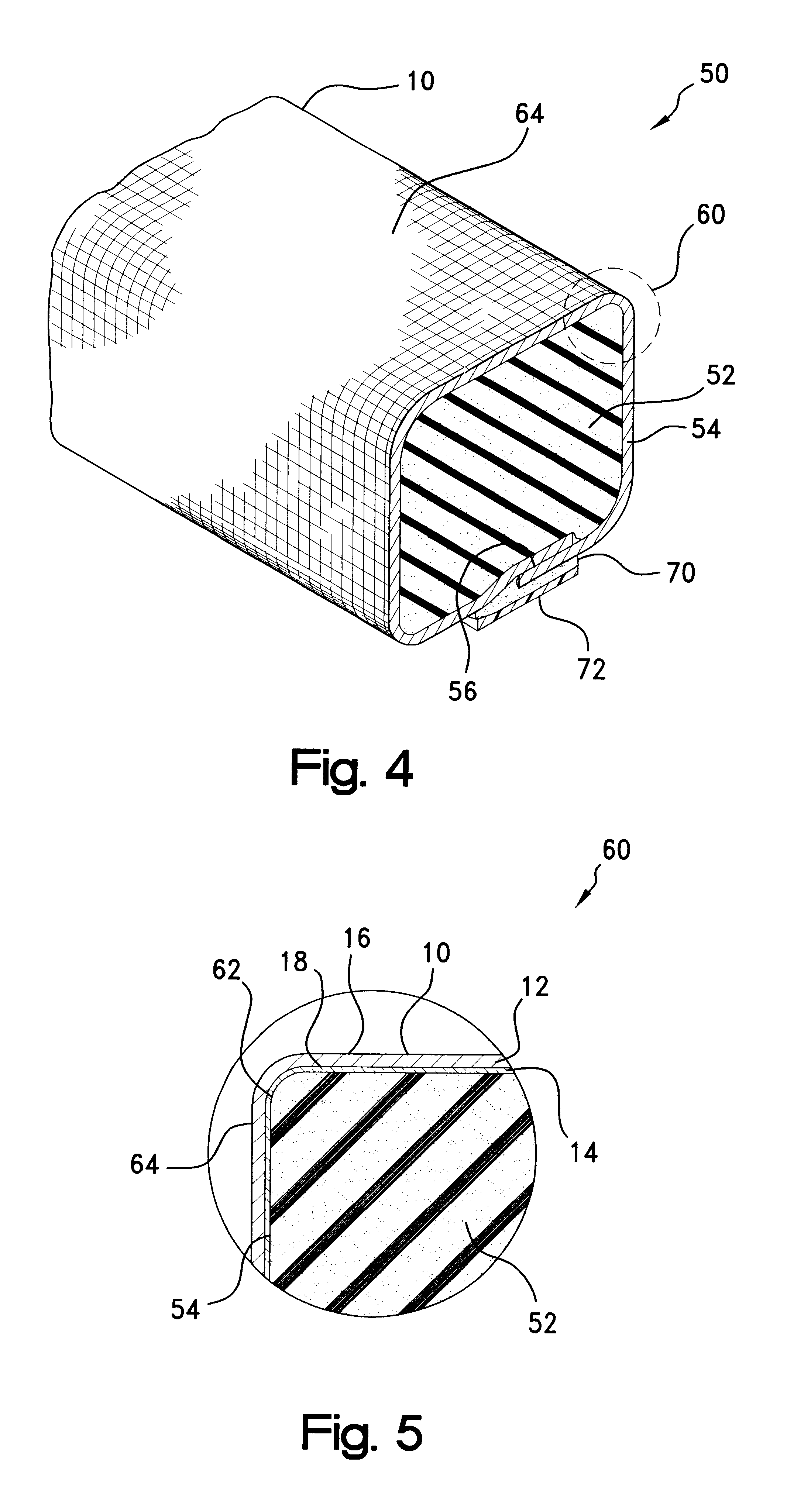Flame retardant EMI shielding materials and method of manufacture
a technology of emi shielding and emi shielding, which is applied in the direction of welding, transportation and packaging, coatings, etc., can solve the problems of fire hazards, reduced shielding efficiency, and flammability of foamed polymeric materials
- Summary
- Abstract
- Description
- Claims
- Application Information
AI Technical Summary
Benefits of technology
Problems solved by technology
Method used
Image
Examples
Embodiment Construction
Representative EMI shielding materials according to the present invention were constructed for characterization. In this regard, a master batch of a flame retardant coating composition was compounded using an acrylic latex emulsion (Heveatex "4129FR"). The viscosity of the emulsion was adjusted to a Brookfield viscosity (#4 spindle, 40 speed) of about 60,000 cps with about 5 wt % of an acryloid thickener (Acrysol.TM. GS, Monsanto Co., St. Louis, Mo.). The modified emulsion had a total solids content of about 60% by weight, a density of about 10 pounds per gallon (1.8 g / cm.sup.3), and a pH of between about 7.5 and 9.5.
The emulsion was applied using a knife over roll coater (JETZONE Model 7319, Wolverine Corp., Merrimac, Mass.) to one side of a silver-plated nylon fabric (Swift "31EN RIPSTOP") having a thickness of about 4 mils (0.1 mm). With the fluid level in the coating trough of the coater maintained at about 4 inch (10 cm), the emulsion was delivered to the surface of the cloth a...
PUM
 Login to View More
Login to View More Abstract
Description
Claims
Application Information
 Login to View More
Login to View More - R&D
- Intellectual Property
- Life Sciences
- Materials
- Tech Scout
- Unparalleled Data Quality
- Higher Quality Content
- 60% Fewer Hallucinations
Browse by: Latest US Patents, China's latest patents, Technical Efficacy Thesaurus, Application Domain, Technology Topic, Popular Technical Reports.
© 2025 PatSnap. All rights reserved.Legal|Privacy policy|Modern Slavery Act Transparency Statement|Sitemap|About US| Contact US: help@patsnap.com



